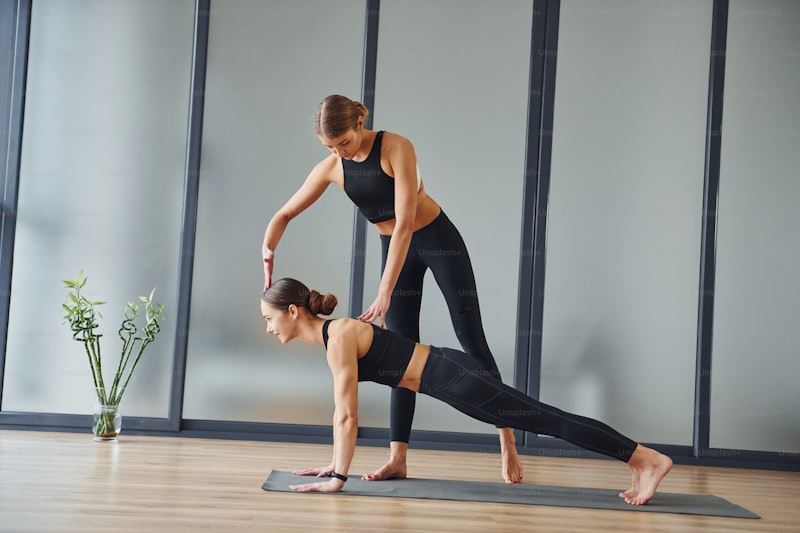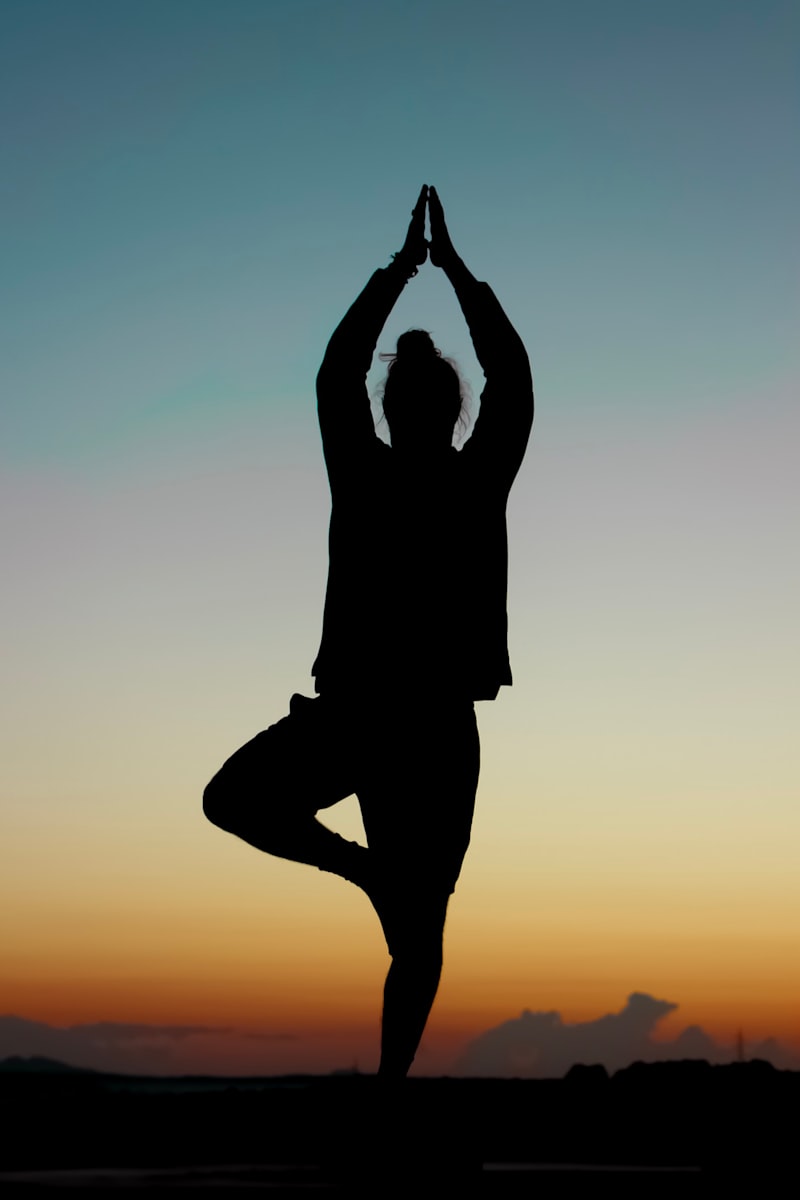Are you curious about yoga but unsure where to start? Yoga isn’t just a singular practice; it’s a diverse world with various styles, each offering unique benefits. From the meditative stillness of Hatha yoga to the dynamic flow of Vinyasa, there’s a style to suit every preference and fitness level.
Let’s begin with Hatha yoga, often considered the foundation of all yoga styles. It focuses on basic postures (asanas) and breathing exercises (pranayama), promoting relaxation and improving flexibility. It’s perfect for beginners looking to ease into the practice with gentle movements and mindful breathing techniques.
If you’re more into movement and synchronization of breath with movement, Vinyasa yoga might be your calling. Known for its fluid transitions between poses, Vinyasa yoga builds strength, enhances cardiovascular health, and encourages a meditative flow state. It’s great for those who enjoy a more dynamic and physically engaging practice.
For those seeking a deep stretch and restoration, Yin yoga offers a passive yet profound experience. This style involves holding poses for longer periods (often three to five minutes or more), targeting connective tissues and joints. Yin yoga enhances flexibility, releases tension, and cultivates mindfulness through stillness.
Power yoga, on the other hand, amplifies the physical intensity with a focus on strength-building postures performed in rapid succession. It’s akin to a cardiovascular workout combined with yoga’s mental benefits, making it popular among fitness enthusiasts seeking a vigorous practice.
If you’re drawn to a spiritual and introspective journey, Kundalini yoga might resonate with you. It blends dynamic movements, breathwork, chanting (mantra), and meditation to awaken spiritual energy (kundalini) believed to reside at the base of the spine. Kundalini yoga enhances mental clarity, spiritual awareness, and emotional balance.
No matter which style you choose, yoga offers holistic benefits that extend beyond physical fitness. It nurtures mental calmness, emotional resilience, and spiritual connection. So, whether you’re aiming to strengthen your body, calm your mind, or deepen your self-awareness, exploring different yoga styles can lead you on a transformative journey of health and well-being.
Unveiling the Zen: How Kundalini Yoga Awakens Energy and Spirituality
Have you ever felt a surge of energy that seems to rise from the base of your spine, flowing upwards like a coiled serpent? This mystical experience is at the heart of Kundalini Yoga, a practice that goes beyond physical exercise to awaken the dormant spiritual energy believed to reside at the base of our spine.
Kundalini Yoga isn’t just about striking poses; it’s a profound journey inward. Imagine your body as a vessel for cosmic energy, with each breath and movement designed to unlock the chakras, the energy centers within us. It’s like tapping into an ancient reservoir of vitality and consciousness.
Through specific postures, breathing techniques (pranayama), and meditation, Kundalini Yoga aims to awaken this dormant energy, known as Kundalini Shakti. As this energy rises through the chakras, it cleanses and revitalizes not just the body but also the mind and spirit. It’s a holistic practice that integrates movement, sound, and meditation to align the practitioner with their truest self.
Think of Kundalini as a potent force, much like a river rushing through the landscape of your being, clearing blockages and awakening awareness. It’s about transcending the physical and connecting with something larger than ourselves—a universal consciousness that permeates everything.
In today’s fast-paced world, where stress and distractions abound, Kundalini Yoga offers a sanctuary—a path to inner peace and spiritual growth. It’s about rediscovering the harmony between body, mind, and spirit, cultivating a deeper connection to oneself and the world around us.
Ready to embark on a journey of self-discovery and transformation? Kundalini Yoga awaits, offering a gateway to unveil the Zen within and awaken the energy and spirituality that lie dormant within us all.
From Strength to Serenity: Exploring the Benefits of Power Yoga
Power yoga isn’t just a workout; it’s a transformative journey that blends strength, flexibility, and mindfulness into a single practice. Unlike traditional yoga styles, power yoga amps up the intensity with a dynamic flow of poses that synchronize breath with movement. This vigorous approach not only builds physical stamina but also enhances mental clarity and inner peace.
One of the standout benefits of power yoga is its ability to sculpt and tone muscles effectively. By challenging the body through sequences that target core strength and balance, practitioners can achieve a leaner physique while improving overall muscle definition. Imagine each pose as a sculptor’s tool, shaping your body with each mindful movement.
Beyond the physical, power yoga is a gateway to mental resilience. The fast-paced nature demands full concentration, helping practitioners to stay present in the moment and let go of distractions. This mindfulness practice extends beyond the mat, fostering a calm demeanor and sharper focus in daily life challenges.
Moreover, power yoga is a great calorie burner. The continuous flow of movements keeps the heart rate elevated, promoting cardiovascular health and aiding weight management. It’s like embarking on a calorie-burning journey where each pose ignites your metabolism, turning your body into a powerhouse of energy.
In essence, power yoga isn’t just about the physical poses; it’s a holistic approach to wellness that integrates body, mind, and spirit. Whether you’re seeking to build strength, find inner peace, or simply break a sweat, this dynamic practice offers a pathway to a healthier, more balanced life.
Finding Balance: The Healing Power of Yin Yoga
Unlike more dynamic forms of yoga, Yin Yoga involves holding poses for extended periods, typically 3 to 5 minutes or even longer. These poses, often seated or lying down, target the deeper connective tissues of the body—the fascia, ligaments, and joints. By staying in these poses for longer durations, practitioners stimulate these tissues, enhancing flexibility and joint mobility over time.
But Yin Yoga is not just about physical benefits. It’s about finding balance and harmony within oneself. The long holds in each pose encourage practitioners to observe their thoughts, sensations, and emotions without judgment. This meditative aspect of Yin Yoga cultivates mindfulness and self-awareness, fostering a deeper understanding of one’s inner landscape.

The healing power of Yin Yoga extends beyond the mat. It teaches patience, acceptance, and the art of letting go—skills that are invaluable in navigating life’s challenges. By surrendering to the present moment and embracing stillness, practitioners learn to release tension, both physical and mental, promoting relaxation and stress relief.

Imagine Yin Yoga as a journey of self-discovery—a quiet exploration of body and mind. Just as a river flows gently around obstacles, Yin Yoga teaches us to flow with the currents of life, finding ease and grace even in the face of adversity. It’s a practice that invites us to slow down, to breathe deeply, and to reconnect with our true essence.
So, whether you’re seeking physical rejuvenation, emotional healing, or simply a moment of peace amidst a hectic day, Yin Yoga offers a pathway—a gentle reminder to find balance within ourselves and in the world around us.
Mindfulness in Motion: Understanding Vinyasa Yoga and Its Mental Benefits
Vinyasa yoga isn’t just a physical exercise; it’s a mindful journey that synchronizes movement with breath, offering profound mental benefits. Imagine yoga as a graceful dance where each posture flows seamlessly into the next, guided by your inhales and exhales. This is the essence of Vinyasa yoga, where mindfulness meets motion.

In essence, Vinyasa yoga is like painting with your body, creating a beautiful sequence of poses that encourage you to stay present in the moment. Unlike static yoga practices, such as Hatha yoga, where poses are held for longer durations, Vinyasa keeps you engaged through continuous movement. It’s a dynamic practice that challenges both your body and mind to stay focused and centered.
Through its fluid nature, Vinyasa yoga cultivates mindfulness by teaching you to pay attention to each transition and posture. Each movement is intentional, requiring you to be fully present on your mat. This mindful awareness not only enhances the physical benefits of yoga but also brings a sense of calmness to the mind.
Imagine yourself flowing through a sequence of sun salutations, each breath guiding you from one pose to the next like waves rolling on a shore. This continuous flow not only builds strength and flexibility but also trains the mind to let go of distractions and worries, fostering a deep sense of mental clarity.
Moreover, Vinyasa yoga is known for its ability to create a moving meditation. As you synchronize your breath with movement, it becomes a rhythmic dance that quietens the chatter of the mind. This meditative aspect of Vinyasa allows practitioners to experience a state of “flow,” where they feel fully immersed in the present moment, free from the pressures of the past or future.
Vinyasa yoga offers a unique pathway to mindfulness through its dynamic sequences and mindful breathing. By practicing Vinyasa, you not only enhance your physical health but also nurture your mental well-being, creating a harmonious balance between body and mind.
Frequently Asked Questions
How do I choose the right yoga style for my fitness goals?
Learn how to choose the ideal yoga style to achieve your fitness goals with our concise guide. Explore different yoga types like Hatha, Vinyasa, and Kundalini, each suited to specific needs such as flexibility, strength building, or relaxation. Discover which style aligns best with your fitness objectives and personal preferences to maximize your yoga practice.
How does each yoga style differ in terms of difficulty and intensity?
This FAQ provides a clear comparison of various yoga styles based on their difficulty and intensity levels. It outlines how each style varies in physical demands and mental focus, helping practitioners choose the best fit based on their fitness level and goals.
What are the main types of yoga and their unique benefits?
Learn about the main types of yoga and their unique benefits with this concise FAQ. Discover how each type, from Hatha to Vinyasa, offers distinct advantages for physical strength, flexibility, relaxation, and mindfulness.
What are the health benefits of practicing different yoga styles?
Explore the health benefits of various yoga styles. Discover how each style, from Hatha to Vinyasa, enhances flexibility, strength, and mental well-being. Learn which style suits your fitness goals and lifestyle.
Can yoga help with stress relief? Which style is best for relaxation?
Discover how yoga can effectively relieve stress and learn about the best yoga styles tailored for relaxation.


